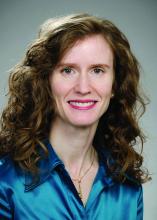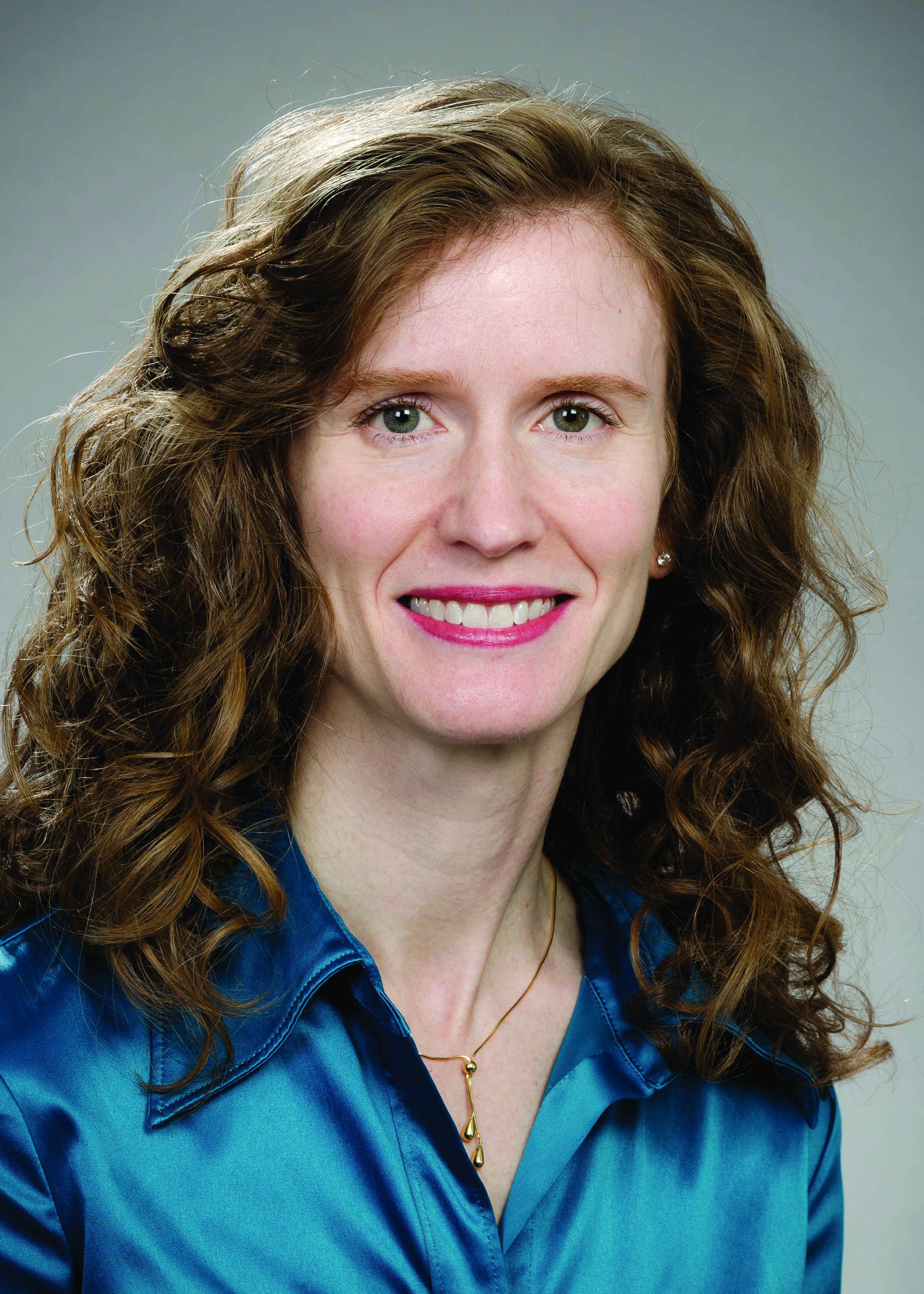User login
If you’re a regular reader of the journal CHEST®, you may have noticed an exciting new initiative for clinicians looking to enhance their understanding of the latest advances in research, improve their clinical knowledge, and earn credits toward certification: the opportunity to earn continuing medical education (CME) credits from monthly journal issues. Launched in late 2022, this new initiative was inspired by the desire to complement the excellent clinical work already being done by readers of the journal.
“Essentially, the idea was that CHEST journal readers are doing the work to keep themselves current and stay excellent doctors, and they should get credit for that work,” said Amy Morris, MD, FCCP, Chair of the CHEST Journal CME Editorial Board. “We all have to do CME, so why not get some credit for the reading that we do on a regular basis to stay current, and add some additional value for journal readers?”
But the initiative isn’t just an opportunity to offer free credits.
“We try to rotate topics month to month, but more than that, we look for articles that either have a broad impact on current clinical practice for a lot of providers, or convey some particular new interest – a way for our readers to learn about something new and interesting,” she said. “We avoid trivia, essentially “gotcha” questions that simply ensure you read the article, but rather focus on questions that reinforce key points in the article.”
To ensure the content covers a wide breadth of topics, the CME Editorial Board – comprising leaders from pulmonary, critical care, and sleep medicine to ensure the process meets a high clinical standard – reviews articles that are slated for publication monthly and selects one or more manuscripts with impactful findings. Once the articles are selected, they are sent to a cohort of experienced question writers sourced from the Network specialty areas within CHEST to draft clinically relevant questions. The final questions and answers then are returned to the Board for a careful review of their accuracy, quality, and relevancy.
Readers can visit chestnet.org/journalcme every month to see a new selection of CME-eligible articles and access questions from past issues – an offering that will only grow more robust as the initiative progresses.
“We have a regularly accumulating collection of questions such that folks who read the journal every month will always have questions to answer, and those who prefer to do some reading and CME acquisition in bulk can find a rich database of useful, interesting articles that maybe they didn’t have a chance to read when they first came out,” said Dr. Morris.
As the initiative evolves, so too will the content selected and the questions offered – a process readers will have an integral role in guiding. After answering the questions, readers will have the opportunity to provide feedback on whether the activity achieved its learning objectives, future topics to cover, and more.
Although the initiative will evolve with this feedback, said Dr. Morris, one thing remains constant: the commitment of the team developing these resources to their fellow clinicians. “We couldn’t do this without a dedicated team and a lot of volunteer time from individuals who really care about education and clinical practice, and making the literature relevant to clinical practice. It takes a lot of time and effort, and I so appreciate the work those individuals are doing.”
To access the latest CME-eligible research, and review past questions, visit chestnet.org/journalcme.
If you’re a regular reader of the journal CHEST®, you may have noticed an exciting new initiative for clinicians looking to enhance their understanding of the latest advances in research, improve their clinical knowledge, and earn credits toward certification: the opportunity to earn continuing medical education (CME) credits from monthly journal issues. Launched in late 2022, this new initiative was inspired by the desire to complement the excellent clinical work already being done by readers of the journal.
“Essentially, the idea was that CHEST journal readers are doing the work to keep themselves current and stay excellent doctors, and they should get credit for that work,” said Amy Morris, MD, FCCP, Chair of the CHEST Journal CME Editorial Board. “We all have to do CME, so why not get some credit for the reading that we do on a regular basis to stay current, and add some additional value for journal readers?”
But the initiative isn’t just an opportunity to offer free credits.
“We try to rotate topics month to month, but more than that, we look for articles that either have a broad impact on current clinical practice for a lot of providers, or convey some particular new interest – a way for our readers to learn about something new and interesting,” she said. “We avoid trivia, essentially “gotcha” questions that simply ensure you read the article, but rather focus on questions that reinforce key points in the article.”
To ensure the content covers a wide breadth of topics, the CME Editorial Board – comprising leaders from pulmonary, critical care, and sleep medicine to ensure the process meets a high clinical standard – reviews articles that are slated for publication monthly and selects one or more manuscripts with impactful findings. Once the articles are selected, they are sent to a cohort of experienced question writers sourced from the Network specialty areas within CHEST to draft clinically relevant questions. The final questions and answers then are returned to the Board for a careful review of their accuracy, quality, and relevancy.
Readers can visit chestnet.org/journalcme every month to see a new selection of CME-eligible articles and access questions from past issues – an offering that will only grow more robust as the initiative progresses.
“We have a regularly accumulating collection of questions such that folks who read the journal every month will always have questions to answer, and those who prefer to do some reading and CME acquisition in bulk can find a rich database of useful, interesting articles that maybe they didn’t have a chance to read when they first came out,” said Dr. Morris.
As the initiative evolves, so too will the content selected and the questions offered – a process readers will have an integral role in guiding. After answering the questions, readers will have the opportunity to provide feedback on whether the activity achieved its learning objectives, future topics to cover, and more.
Although the initiative will evolve with this feedback, said Dr. Morris, one thing remains constant: the commitment of the team developing these resources to their fellow clinicians. “We couldn’t do this without a dedicated team and a lot of volunteer time from individuals who really care about education and clinical practice, and making the literature relevant to clinical practice. It takes a lot of time and effort, and I so appreciate the work those individuals are doing.”
To access the latest CME-eligible research, and review past questions, visit chestnet.org/journalcme.
If you’re a regular reader of the journal CHEST®, you may have noticed an exciting new initiative for clinicians looking to enhance their understanding of the latest advances in research, improve their clinical knowledge, and earn credits toward certification: the opportunity to earn continuing medical education (CME) credits from monthly journal issues. Launched in late 2022, this new initiative was inspired by the desire to complement the excellent clinical work already being done by readers of the journal.
“Essentially, the idea was that CHEST journal readers are doing the work to keep themselves current and stay excellent doctors, and they should get credit for that work,” said Amy Morris, MD, FCCP, Chair of the CHEST Journal CME Editorial Board. “We all have to do CME, so why not get some credit for the reading that we do on a regular basis to stay current, and add some additional value for journal readers?”
But the initiative isn’t just an opportunity to offer free credits.
“We try to rotate topics month to month, but more than that, we look for articles that either have a broad impact on current clinical practice for a lot of providers, or convey some particular new interest – a way for our readers to learn about something new and interesting,” she said. “We avoid trivia, essentially “gotcha” questions that simply ensure you read the article, but rather focus on questions that reinforce key points in the article.”
To ensure the content covers a wide breadth of topics, the CME Editorial Board – comprising leaders from pulmonary, critical care, and sleep medicine to ensure the process meets a high clinical standard – reviews articles that are slated for publication monthly and selects one or more manuscripts with impactful findings. Once the articles are selected, they are sent to a cohort of experienced question writers sourced from the Network specialty areas within CHEST to draft clinically relevant questions. The final questions and answers then are returned to the Board for a careful review of their accuracy, quality, and relevancy.
Readers can visit chestnet.org/journalcme every month to see a new selection of CME-eligible articles and access questions from past issues – an offering that will only grow more robust as the initiative progresses.
“We have a regularly accumulating collection of questions such that folks who read the journal every month will always have questions to answer, and those who prefer to do some reading and CME acquisition in bulk can find a rich database of useful, interesting articles that maybe they didn’t have a chance to read when they first came out,” said Dr. Morris.
As the initiative evolves, so too will the content selected and the questions offered – a process readers will have an integral role in guiding. After answering the questions, readers will have the opportunity to provide feedback on whether the activity achieved its learning objectives, future topics to cover, and more.
Although the initiative will evolve with this feedback, said Dr. Morris, one thing remains constant: the commitment of the team developing these resources to their fellow clinicians. “We couldn’t do this without a dedicated team and a lot of volunteer time from individuals who really care about education and clinical practice, and making the literature relevant to clinical practice. It takes a lot of time and effort, and I so appreciate the work those individuals are doing.”
To access the latest CME-eligible research, and review past questions, visit chestnet.org/journalcme.

